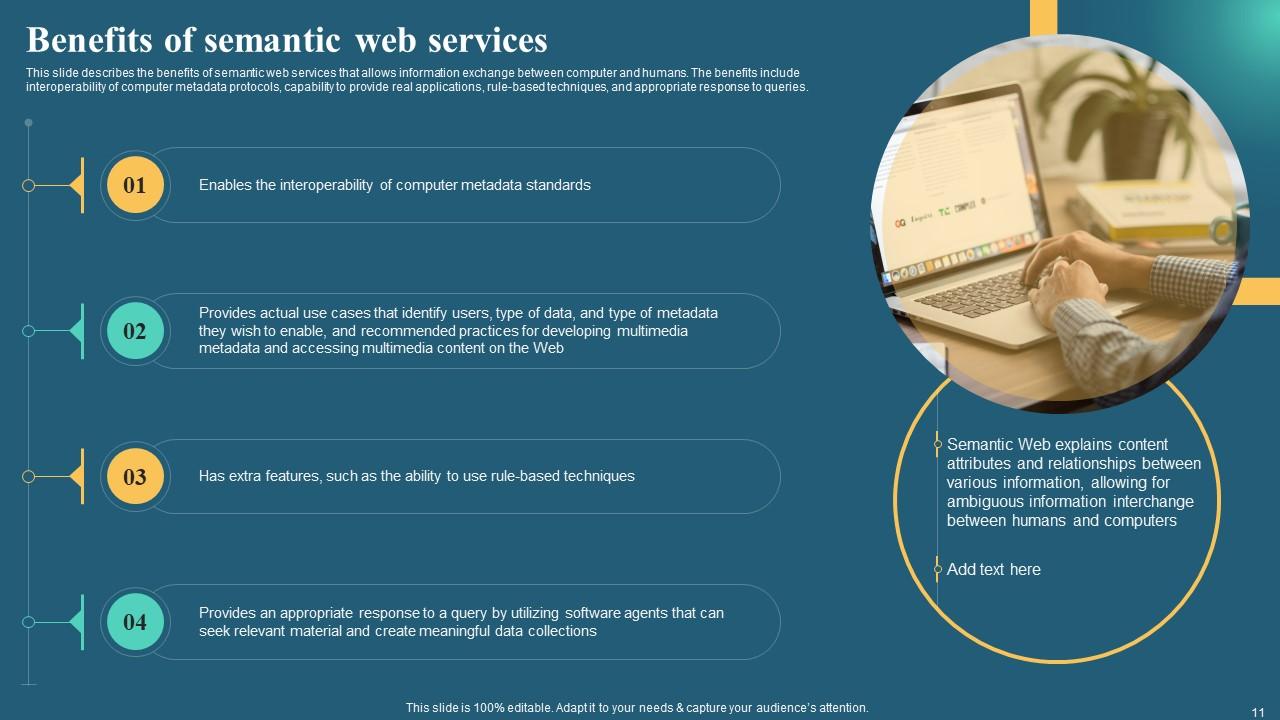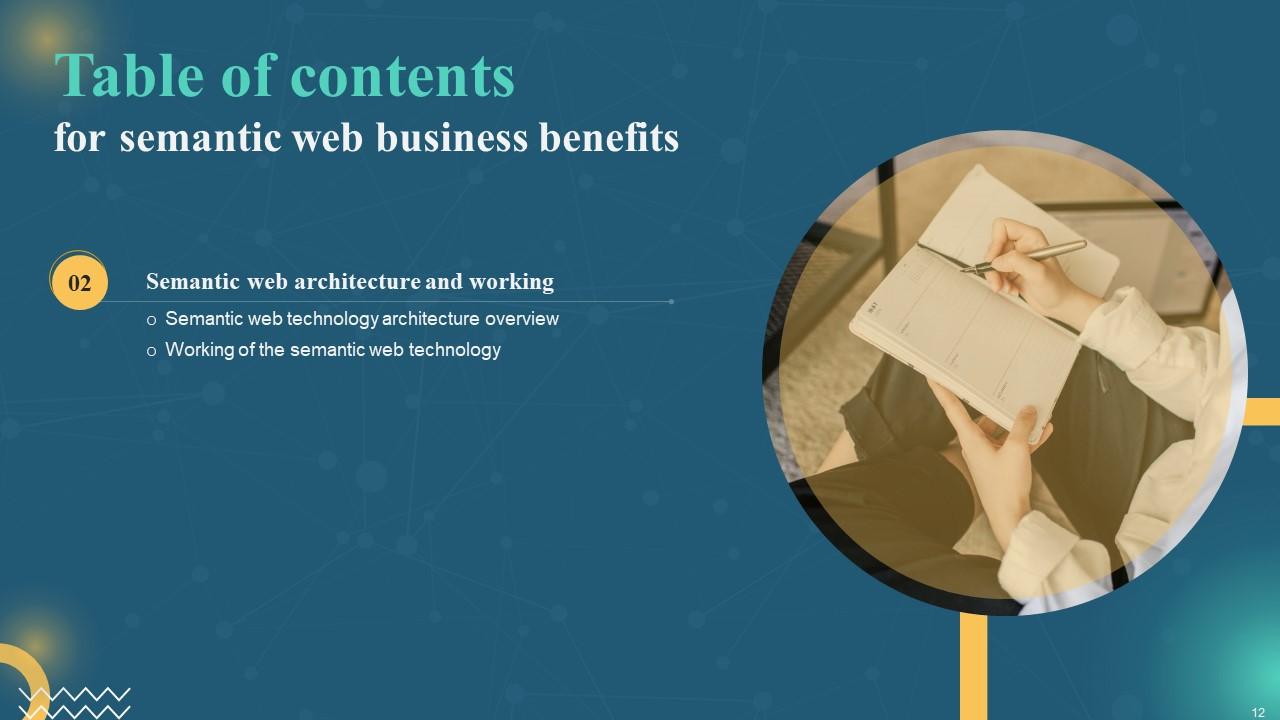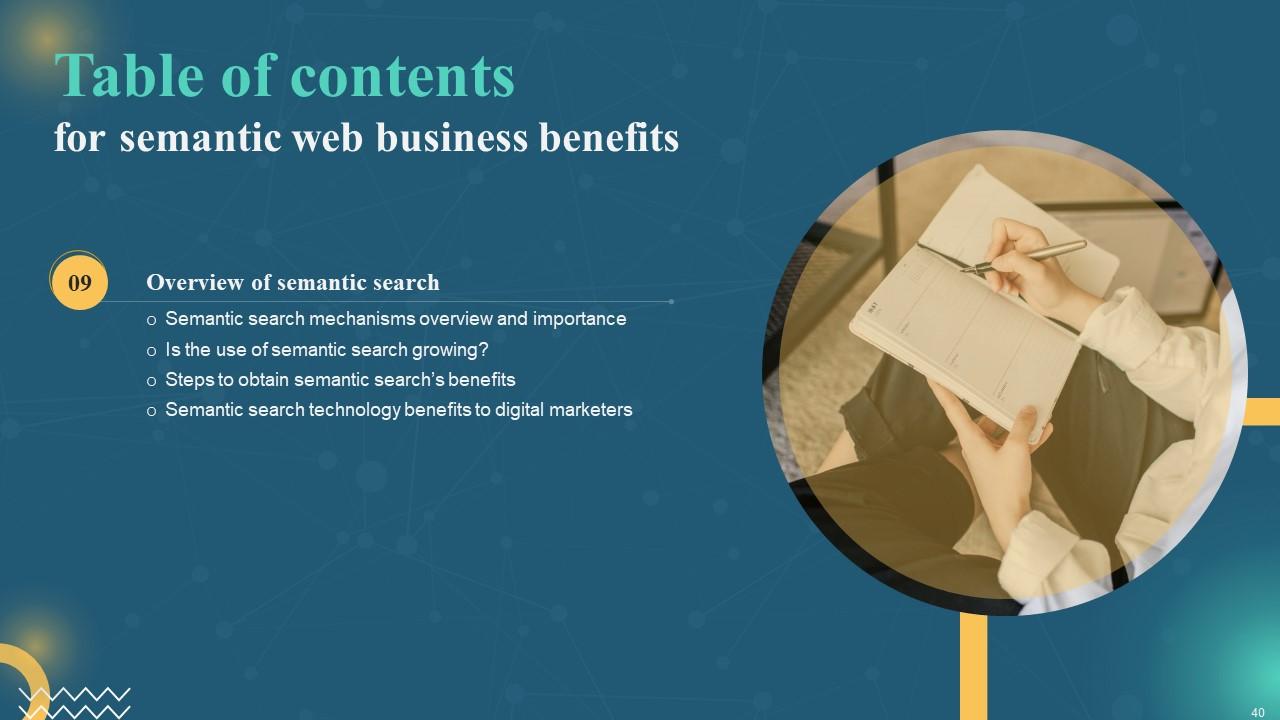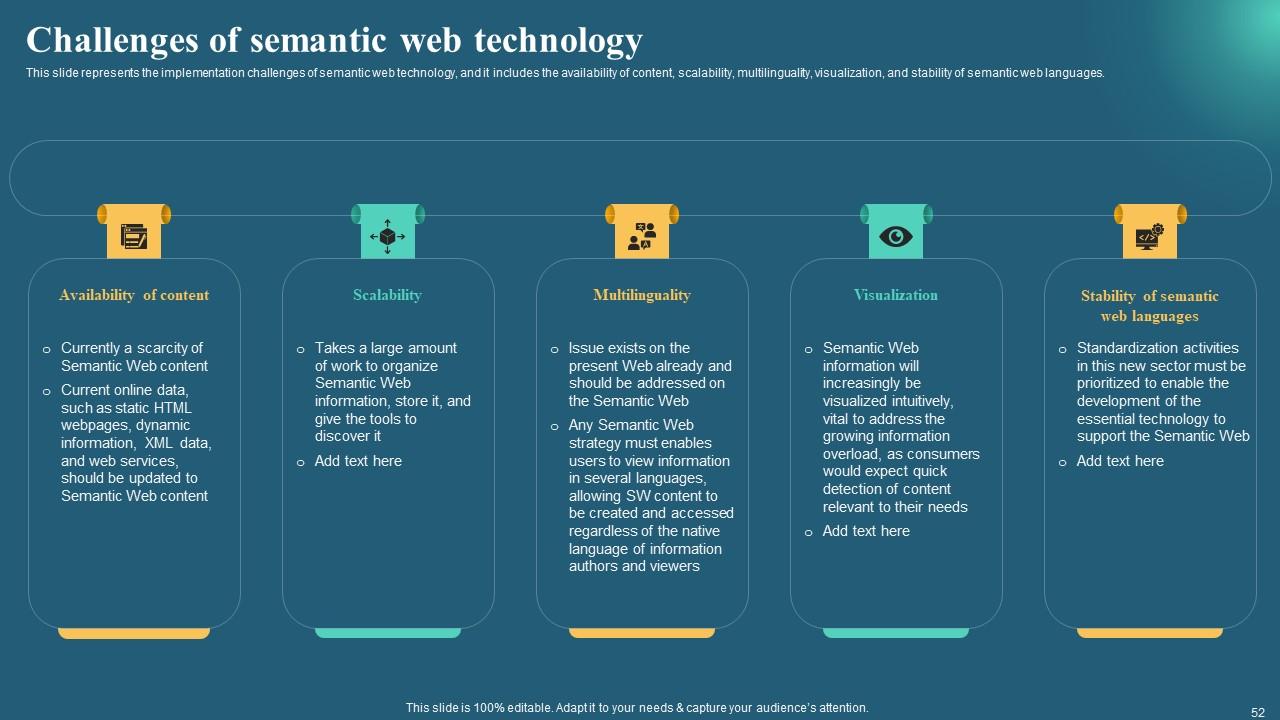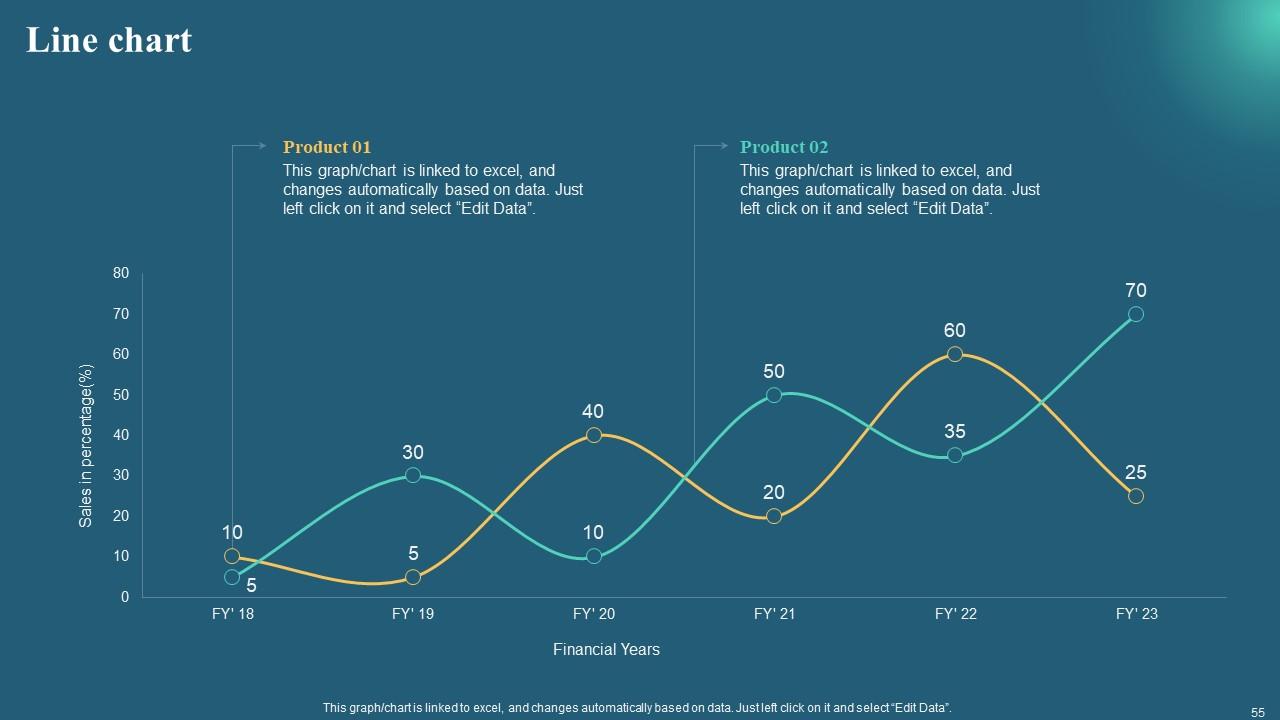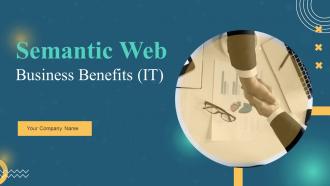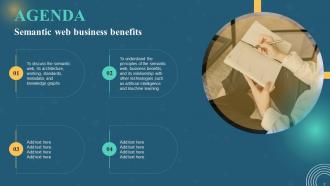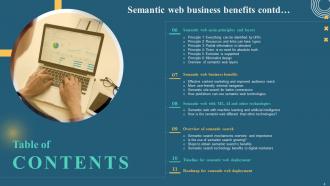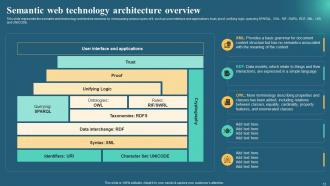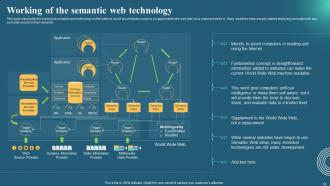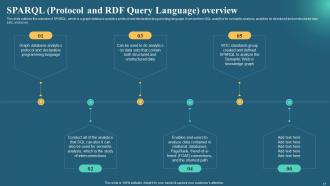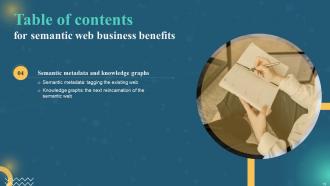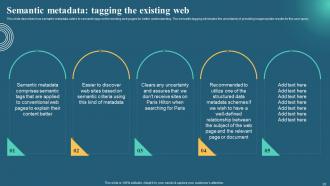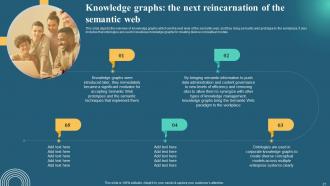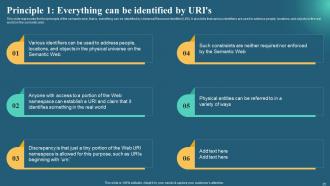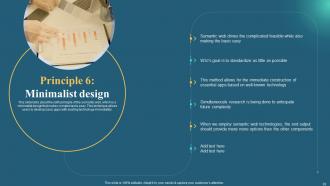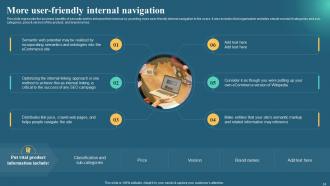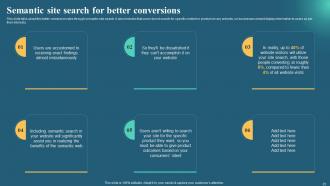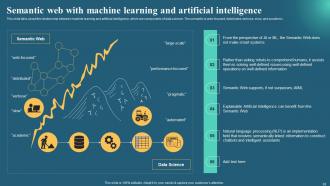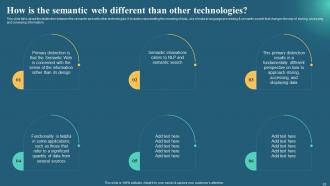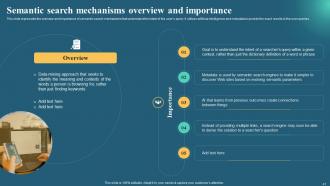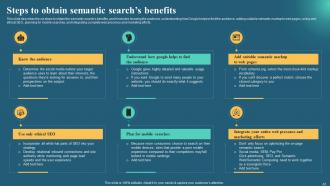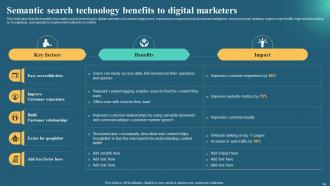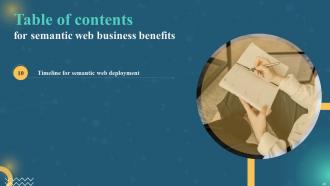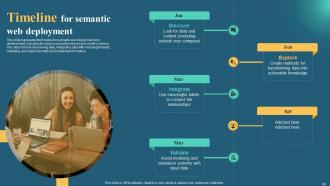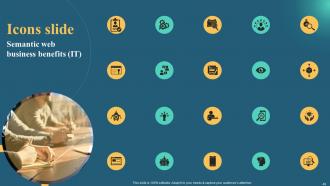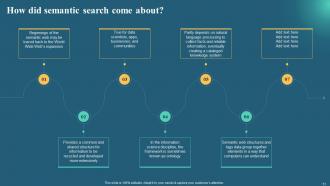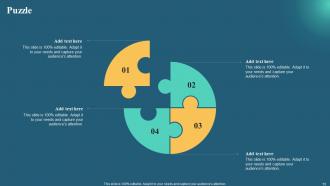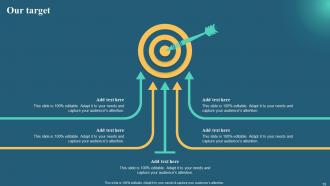Semantic Web Business Benefits IT Powerpoint Presentation Slides
The semantic web helps in making internet data machine-readable. Check out our Semantic Web Business Benefits IT template. It provides a high-level overview of the semantic web, including its introduction, foundation, entities and ontologies, impact, and benefits. Our Semantic Web Ontology deck discusses the semantic web architecture, how it works, semantic web standards, knowledge graphs, and semantic metadata. It also includes the Markups and measures that aid in creating semantic meta-statements, bars, and rules. Additionally, our Semantic Web Business Benefits PPT contains the principles and layers, resources, related links and their types, partial information, etc. Further, it discusses the business benefits of the semantic web and its relationship with Machine Learning, Artificial Intelligence, and other technologies. Our Semantic Search module also showcases the semantic search mechanism and importance, its growth steps to obtain its benefits, and its benefits to digital marketers. Lastly, it includes a roadmap and a timeline for semantic web development. Get access to this powerful template now.
- Google Slides is a new FREE Presentation software from Google.
- All our content is 100% compatible with Google Slides.
- Just download our designs, and upload them to Google Slides and they will work automatically.
- Amaze your audience with SlideTeam and Google Slides.
-
Want Changes to This PPT Slide? Check out our Presentation Design Services
- WideScreen Aspect ratio is becoming a very popular format. When you download this product, the downloaded ZIP will contain this product in both standard and widescreen format.
-

- Some older products that we have may only be in standard format, but they can easily be converted to widescreen.
- To do this, please open the SlideTeam product in Powerpoint, and go to
- Design ( On the top bar) -> Page Setup -> and select "On-screen Show (16:9)” in the drop down for "Slides Sized for".
- The slide or theme will change to widescreen, and all graphics will adjust automatically. You can similarly convert our content to any other desired screen aspect ratio.
Compatible With Google Slides

Get This In WideScreen
You must be logged in to download this presentation.
PowerPoint presentation slides
This complete presentation has PPT slides on wide range of topics highlighting the core areas of your business needs. It has professionally designed templates with relevant visuals and subject driven content. This presentation deck has total of fifty nine slides. Get access to the customizable templates. Our designers have created editable templates for your convenience. You can edit the color, text and font size as per your need. You can add or delete the content if required. You are just a click to away to have this ready-made presentation. Click the download button now.
People who downloaded this PowerPoint presentation also viewed the following :
Content of this Powerpoint Presentation
Slide 1: This slide introduces Semantic Web Business Benefits (IT). Commence by stating Your Company Name.
Slide 2: This slide depicts the Agenda of the presentation.
Slide 3: This slide incorporates the Table of Contents.
Slide 4: This slide continues the Table of Contents.
Slide 5: This slide highlights the Title for the Topics to be covered further.
Slide 6: This slide represents the introduction to semantic web technology that makes internet data machine-readable.
Slide 7: This slide talks about the basis of semantic web technology.
Slide 8: This slide shows the motivation behind the semantic web to enable machines to understand data.
Slide 9: This slide gives an overview of entities and ontologies.
Slide 10: This slide represents how the semantic web adds meaning to information on the web.
Slide 11: This slide describes the benefits of semantic web services that allows information exchange between computer and humans.
Slide 12: This slide shows the Heading for the Contents to be discussed next.
Slide 13: This slide reveals the Semantic web technology architecture overview.
Slide 14: This slide highlights the Working of the semantic web technology.
Slide 15: This slide displays the Title for the Ideas to be further covered.
Slide 16: This slide represents the resource description framework overview that helps define the data about the information.
Slide 17: This slide outlines the overview of SPARQL, which is a graph database analytics protocol and declarative programming language.
Slide 18: This slide depicts the overview of web ontology language.
Slide 19: This slide elucidates the Heading for the Ideas to be discussed next.
Slide 20: This slide describes how semantic metadata caters to semantic tags on the existing web pages for better understanding.
Slide 21: This slide depicts the overview of knowledge graphs.
Slide 22: This slide incorporates the Title for the Contents to be covered in the following template.
Slide 23: This slide represents the markups and standards that help create semantic meta-statements, standards, and rules.
Slide 24: This slide contains the Heading for the Topics to be discussed further.
Slide 25: This slide presents the first principle of the semantic web.
Slide 26: This slide depicts the second principle of the semantic web.
Slide 27: This slide highlights the partial information is tolerated principle of the semantic web.
Slide 28: This slide explains there is no need for the absolute truth principle of the semantic web.
Slide 29: This slide reveals the fifth principle of the semantic web.
Slide 30: This slide talks about the sixth principle of the semantic web, which is a minimalist design that makes complex tasks easy.
Slide 31: This slide represents the overview of semantic web layers.
Slide 32: This slide indicates the Title for the Topics to be covered in the upcoming template.
Slide 33: This slide outlines the benefits of the semantic web to businesses.
Slide 34: This slide represents the business benefits of semantic web to enhance their revenue.
Slide 35: This slide talks about the better conversion rates through semantic site search.
Slide 36: This slide portrays how publishers can use the semantic web on their websites for a better conversion rate.
Slide 37: This slide displays the Heading for the Contents to be discussed in the forth-coming template.
Slide 38: This slide focuses on Semantic web with machine learning and artificial intelligence.
Slide 39: This slide talks about the distinction between the semantic web with other technologies.
Slide 40: This slide depicts the Title for the Ideas to be further covered.
Slide 41: This slide represents the overview and importance of semantic search mechanisms that understand the intent of the user’s query.
Slide 42: This slide elucidates the growing applications of semantic search in recent years.
Slide 43: This slide describes the six steps to obtain the semantic search’s benefits.
Slide 44: This slide presents the benefits of semantic search technology to digital marketers.
Slide 45: This slide showcases the Heading for the Ideas to be discussed next.
Slide 46: This slide represents the timeline for semantic web deployment and development.
Slide 47: This slide exhibits the Title for the Contents to be coveerd in the upcoming template.
Slide 48: This slide represents the roadmap for semantic web deployment and development.
Slide 49: This is the Icons slide containing all the Icons used in the plan.
Slide 50: This slide is used for displaying some Additional information.
Slide 51: This slide showcases How Semantic search come about.
Slide 52: This slide represents the implementation challenges of semantic web technology.
Slide 53: This is the Venn diagram slide.
Slide 54: This slide is used for revealing the organization's mission, vision, and goals.
Slide 55: This slide elucidates the Line chart.
Slide 56: This is the Puzzle slide with related imagery.
Slide 57: This slide showcases the firm's Timeline.
Slide 58: This is Our target slide. State your company targets here.
Slide 59: This is the Thank you slide for acknowledgement.
Semantic Web Business Benefits IT Powerpoint Presentation Slides with all 64 slides:
Use our Semantic Web Business Benefits IT Powerpoint Presentation Slides to effectively help you save your valuable time. They are readymade to fit into any presentation structure.
FAQs
Semantic web technology is a way of making internet data machine-readable, enabling machines to understand the data. It works by adding meaning to information on the web through entities, ontologies, and semantic metadata.
The benefits of using semantic web services include better information exchange between computers and humans, improved accuracy in search results, and increased efficiency in data management.
The resource description framework is a standard for describing resources on the web using a set of simple building blocks called triples. It helps define data by providing a way to express relationships between resources.
Knowledge graphs are a way of representing data as a network of interconnected nodes, which can be used to build a semantic model of a domain. They are an essential tool in semantic web technology, as they enable machines to reason about the meaning of information.
Digital marketers can benefit from semantic search technology by improving their Search Engine Optimization (SEO), increasing the visibility of their content, and providing a better user experience through more accurate and relevant search results.
-
I am really satisfied with their XYZ products. Used their slides for my business presentations and now I am taking their help for my son's high-school assignments. Super satisfied!!
-
They helped us design the pamphlets for our church’s food drive! The people loved the design, and I’m happy to say it was successful. Thank you, SlideTeam!












